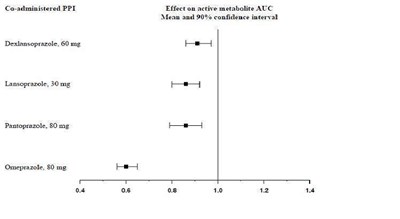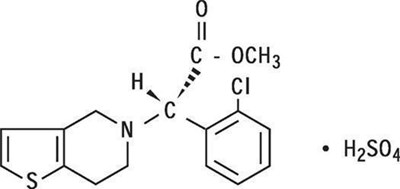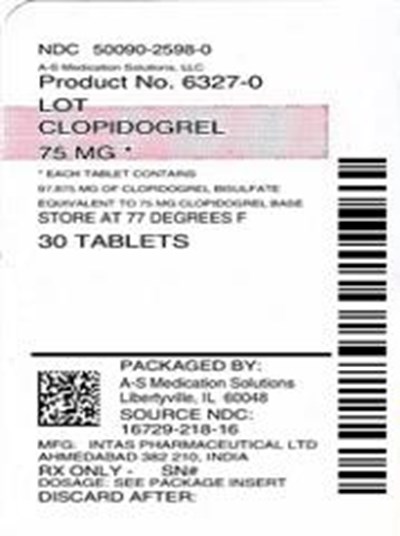Product Images Clopidogrel
View Photos of Packaging, Labels & Appearance
- Figure - clopidogrel fig1
- Figure - clopidogrel fig2
- Figure - clopidogrel fig3
- Figure - clopidogrel fig4
- Figure - clopidogrel fig5
- Figure - clopidogrel fig6
- Change relative to clopidogrel bisulfate administered alone - clopidogrel fig8
- Figure - clopidogrel fig9
- clopidogrel-str - clopidogrel str
- Label Image - lbl500902598
Product Label Images
The following 10 images provide visual information about the product associated with Clopidogrel NDC 50090-2598 by A-s Medication Solutions, such as packaging, labeling, and the appearance of the drug itself. This resource could be helpful for medical professionals, pharmacists, and patients seeking to verify medication information and ensure they have the correct product.
Figure - clopidogrel fig1

This is a graph that shows the cumulative event rate of fatal or non-fatal vascular events for patients taking aspirin versus clopidogrel bisulfate. The months of follow-up are listed on the x-axis, while the cumulative event rate is listed on the y-axis as a percentage. The graph shows that patients taking clopidogrel bisulfate have a lower cumulative event rate than those taking aspirin. At the 12-month mark, the event rate for aspirin is around 16% while the event rate for clopidogrel bisulfate is around 12%. The p-value, indicating statistical significance, is provided as 0.045.*
Figure - clopidogrel fig2
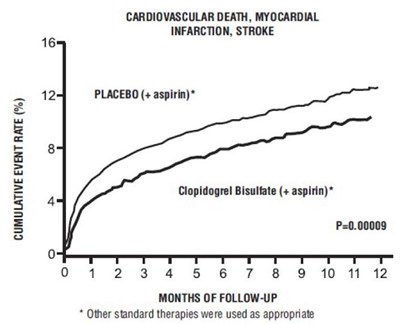
This is a chart showing the cumulative event rate percentage for cardiovascular death, myocardial infarction, and stroke over the course of 12 months of follow-up. The chart compares the results of a placebo (with aspirin) and clopidogrel bisulfate (with aspirin) using other standard therapies as appropriate. The data indicates that the use of clopidogrel bisulfate with aspirin significantly reduces the cumulative event rate compared to the placebo.*
Figure - clopidogrel fig3

This is a medical dataset that seems to contain the quantitative analysis of a clinical study. The study evaluates the effectiveness of two treatments (Clopidogrel and Bisultate) for a medical condition. The study assesses the effect of several medical conditions and treatments on the treatment outcomes. The provided data includes the number and percentage of patients who had particular medical conditions or received specific treatments, as well as the Hazard Ratio for each treatment. Some of the medical conditions included in the analysis are Diabetes, previous MI, previous stroke, and the use of Hepari/LMWH, GPIblla Antag, Beta-Blocker, and Ace Inhibitor. The dataset also calculates Overall figures for each medical condition or treatment.*
Figure - clopidogrel fig4
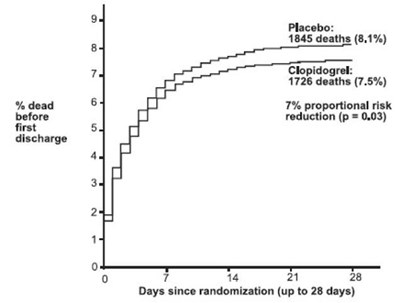
This is a comparison study of the placebo with the drug Clopidogrel. The percentage of deaths before the first discharge for both groups is reported, along with a 7% proportional risk reduction for the Clopidogrel group (p = 0.03) observed over a 28 days period since randomization.*
Figure - clopidogrel fig5
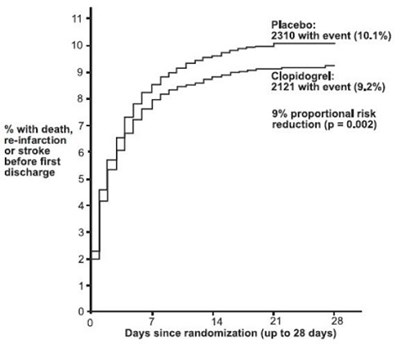
This text appears to be a summary of data from a medical study. The study involved the use of a drug called Clopidogrel to reduce the risks of death, re-infarction, or stroke before discharge from a medical facility. The results showed that the group treated with Clopidogrel had a 9% reduction in risk compared to the placebo group, with the treatment group experiencing 2121 events out of 2310 (9.2%) and the placebo group experiencing 2310 events out of 10,000 (10.1%). The text also references randomization for up to 28 days.*
Figure - clopidogrel fig9
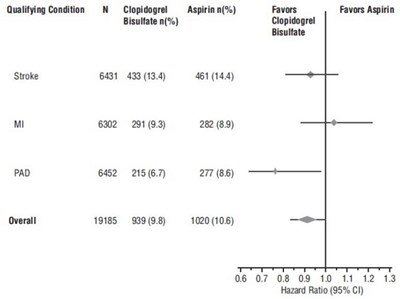
This is a statistical table with information related to Qualifying Condition, Stroke, and PAD, along with data related to Clopidogrel and Aspirin (%), and Favors. It also shows data from 2006 to 2013, but the context and purpose of this table are not clear.*
* The product label images have been analyzed using a combination of traditional computing and machine learning techniques. It should be noted that the descriptions provided may not be entirely accurate as they are experimental in nature. Use the information in this page at your own discretion and risk.

